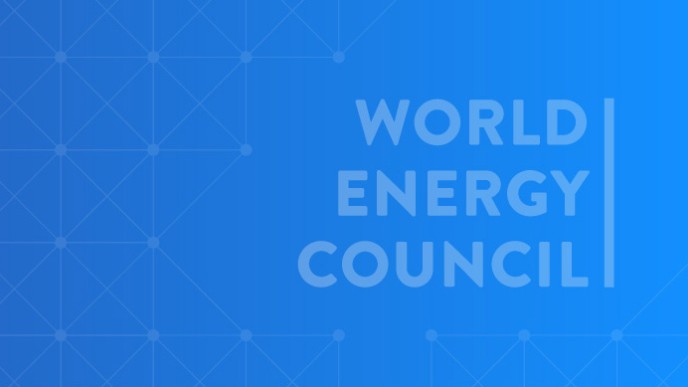The New Delhi WELS offered a platform for energy leaders to explore solutions in order to energise social innovation as a key strategy for solving "Energy Trilemma": finding the right balance between energy security, social equity and environmental impact mitigation. Solving Power Equation was a major topic and below is a summary of the key points addressed during the discussion.
Christiana Figueres, Executive Secretary of the UNFCCC, first addressed the WELS participants by video: “In a world in which an increasing population and growing energy demand are already pushing against planetary boundaries, we face a trilemma of concurrently addressing energy security, social equity and environmental impact mitigation. Perhaps not by coincidence, the only way to address this triple challenge is to interlink the three parts of the solution: the international regulatory framework, the national policy development and private sector investment.”
-
Power is essential for economic growth, well-being, health, education, etc. One trillion dollars are needed to increase energy access. This is five times the investment trend rate. There are also tremendous challenges in terms of integrating and interconnecting grids. However, it is not just a question of expanding access on the current model, but expanding access in a way that gives a platform for the greater use of electricity and a move away from dirty fuels. If we do not get the trilemma right, none of this is going to happen.
-
As noted at last year’s Istanbul WELS, less than 1% of the 73 trillion dollars in pension plans is invested in sustainable energy projects. We need to unlock these funds through policy and risk alignment. Misaligning risk creates risk and increases the cost of financing project. For instance, the cost of financing nearly identical solar projects in India and Germany is twice as expensive in Germany because of risk misalignment. There are four players that need to be aligned – governments, development banks (including green banks), industry developers and investors.
-
The financial crisis had a big impact on the way investors view the risk profile of the utility sector. This perception will not change rapidly and the new normal will increase the risk profile for the global power sector, which will inevitably result in higher capital costs and the reduction of universal investors as utilities are no longer the safe havens that they used to be. Energy infrastructure should be an easy link to finance. Arguably, the recent volatility in equity markets and the low interest rates in capital markets even help to attract funds to energy infrastructure. The key drivers behind this are an increased focus and additional funding availabilities including pension funds, insurance companies, sovereign wealth funds, debt capital markets, etc.
-
Regulation plays a big part in investors’ decisions on which infrastructures are attractive investments and which are not. Therefore regulators and government have an important role to play in terms of providing the right framework to attract capital to the sector in a sustainable and cost efficient way.
-
India does not have enough oil and gas, but it has the 5th largest coal reserve in the world and coal remains the main fuel source for generating power. Some suggest that coal is dirty energy, but the fuel remains essential in India. India is also working on making energy as clean as it can, both via monitoring and the development of ultra-super critical technology, which has 45% thermal efficiency. A 1% improvement in efficiency will reduce the carbon footprint by 2.5%. The Indian grid industry faces many challenges and it is estimated that the country needs 5-5.5 billion dollars every year from 2012-2017 in order to meet the tremendous growth of the power sector. This level of investment is needed to cover the costs of integrating rapid growth renewables, synchronising the national grid integration, market operations, grid management (including grid discipline to prevent black-outs), commercial viability, and human resources.
-
2003 was a landmark year for India with the start of consistent nation-wide power sector reforms. One of the primary objectives was to achieve efficiency and to restore the financial health of the utility sector. The electricity distribution industry does not have the capacity to make the necessary investment due to its heavy dependence on subsidies and government. At least 25-30%, and sometimes more than 40%, of electricity today is being supplied to agriculture. Furthermore, this supply is provided either completely free of charge or at a low rate (not metered). The burden is increasing and it will not be sustainable. Agriculture uses energy very inefficiently and energy savings of almost 40-50% could be made by deploying energy efficient farming.
-
A sustainable energy system enables us to simultaneously tackle the three long-term global challenges: fuelling economic growth with competitive energy for all; combating climate change and protecting our environment; and enhancing security of supply. The industry should evolve to take into account international technology developments and geopolitical constraints. At the same time, it should be grounded at a local level, close to clients and stakeholders. Listening to their expectations and providing an efficient and safe supply of energy would allow the industry to avoid power cuts, to adapt to new energy uses, to help develop local resources, and to adapt to local regulations.
Other topics discussed during the New Delhi WELS with summary notes available include : Energy-Water Nexus; Renewables: Accelerating the Roll-out; and Gas Markets Outlook: Implications of Shale Gas.
The next WELS will take place in Daegu, South Korea on 15 October 2013 as part of the 2013 World Energy Congress.





